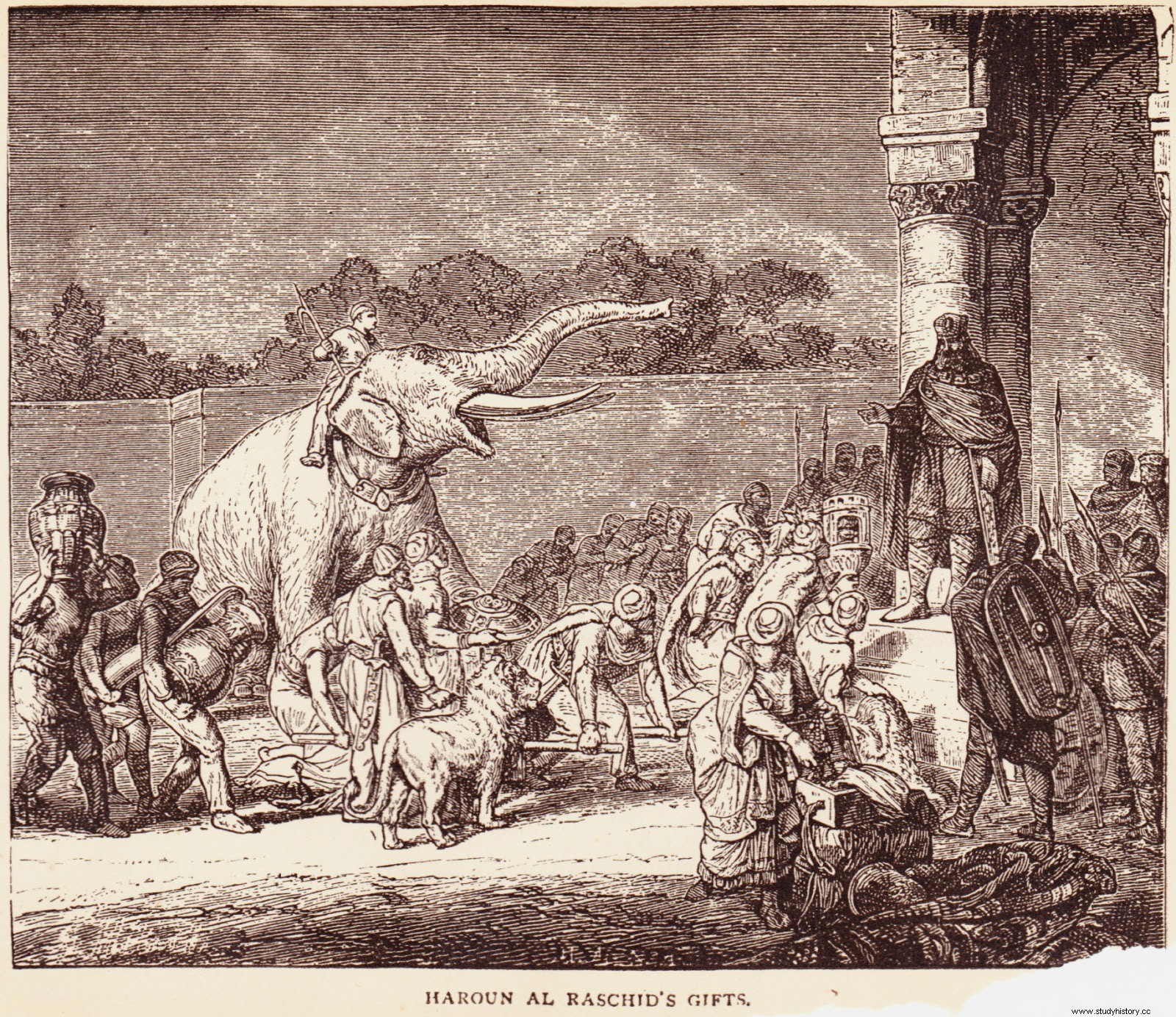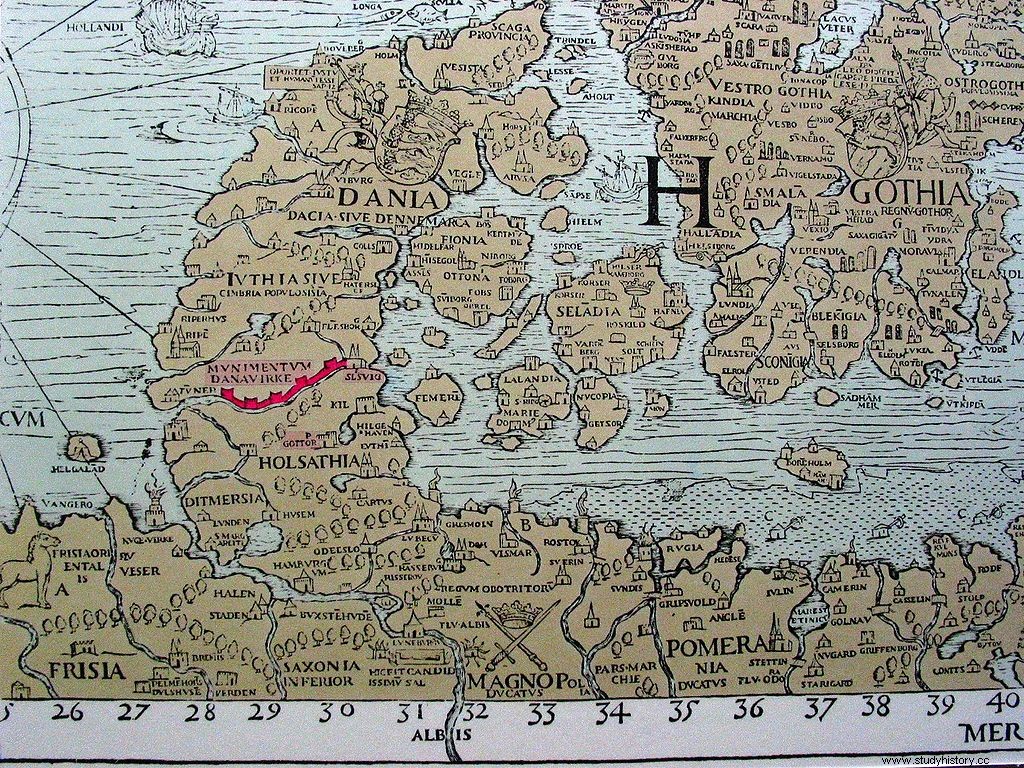In the spring of the year 218 B.C. the Carthaginian general Hannibal Barca He departed from Sagunto, a city conquered shortly before for being an ally of Rome. His objective was to invade Rome by land, crossing the Alps, at the head of an army of fifty thousand men, nine thousand horses and thirty-seven war elephants. Hannibal achieved his goal and put the Romans in real trouble, although the same cannot be said for those thirty-seven elephants. Most of them died during the crossing of the mountain range or victims of humidity in the marshes of the north of the Italian peninsula. The only one that managed to survive was used as a mount by Hannibal himself.

The Battle of Thapsus (46 BC), in the framework of the Second Civil War of the Republic of Rome, was the last battle in which war elephants were used in the West. For centuries those African elephants from Hannibal's army were the ones that had entered Europe the most.
Harun al-Rashid, the caliph of One Thousand and One Nights
Harun al-Rashid , the Just , was the fifth Abbasid caliph of Baghdad. He came to power after the short rule of his brother (who died just a year after becoming caliph) in 786. He died in 809, so he was caliph for almost twenty-three years, becoming the most famous of his dynasty. So much so that he was immortalized as the protagonist, along with his wife Zobeida , from many of the stories of The Thousand and One Nights .
It was the time when the decline of the caliphate began. During the rule of Harun the Aghlabids established the emirate of Ifriqiya , which would eventually become independent, and not long ago the Umayyad Abderramán I had proclaimed the independent emirate of Córdoba in al-Ándalus, which would end up giving rise to the Caliphate of Córdoba.
Charlemagne and the Saracens
The figure of the time in Europe was Charlemagne . King of the Franks and the Lombards and, from the year 800, Imperator Augustus , he came to dominate an empire the likes of which had not been seen in Europe since the fall of the Roman Empire. And it was inevitable that he would confront Islam. However, these clashes took place mainly against the Andalusian Arabs, from their crossing of the Pyrenees in 778 with the intention of subjugating the emirate and annexing it to their empire (although it came out quite badly in Roncesvalles), until the conquests of Corsica, Sardinia and the Balearic Islands, frequently attacked by Saracen pirates.
On the contrary, and perhaps for the same reason, his relationship with the Baghdad caliphate was even cordial. Moreover, after the appointment of Harun al-Rashid as caliph, Charlemagne sent a delegation with gifts and congratulations for the new ruler.

Harun al-Rashid receives a delegation from Charlemagne
The gift of the caliph
Harun was a strong and respected ruler, a worthy reflection in Islam of what Charlemagne stood for in Europe, so he had to reciprocate the Carolingian embassy in a big way. So Haroun sent the king of the Franks an impressive gift, worthy of the emperor he would soon become: a white elephant .
Abul-Abbas was the name of this rare specimen of Asian elephant, which after crossing the Mediterranean landed in Italy in 801, just a few months after the coronation of Charlemagne as emperor in Rome by Pope Leo III. On July 1, 802, Abul-Abbas arrived at the court of Aachen, becoming the first elephant to be seen in northern Europe.

And Abul-Abbas he even went into battle. Two years after his arrival in Germany, in 804, King Godfrey I of Denmark attacked the present city of Lübeck, then still a small market town. This city adjoins the Jutland peninsula, and Godfrey I spent his entire reign fearing a Frankish invasion of this region. So much so that he started the construction of the Danevirke , a huge wall that separated Jutland from the Frankish kingdom.

Danevirke
The invasion finally did not take place, but in 804 Charlemagne responded to the aggression by mobilizing his armies to attack the Danish troops… and he took Abul-Abbas with him. Eight and a half centuries after the Battle of Thapsus, an elephant once again walked a European battlefield. Abul-Abbas He died in the year 810, in his early forties, due to pneumonia after bathing in the Rhine River.
